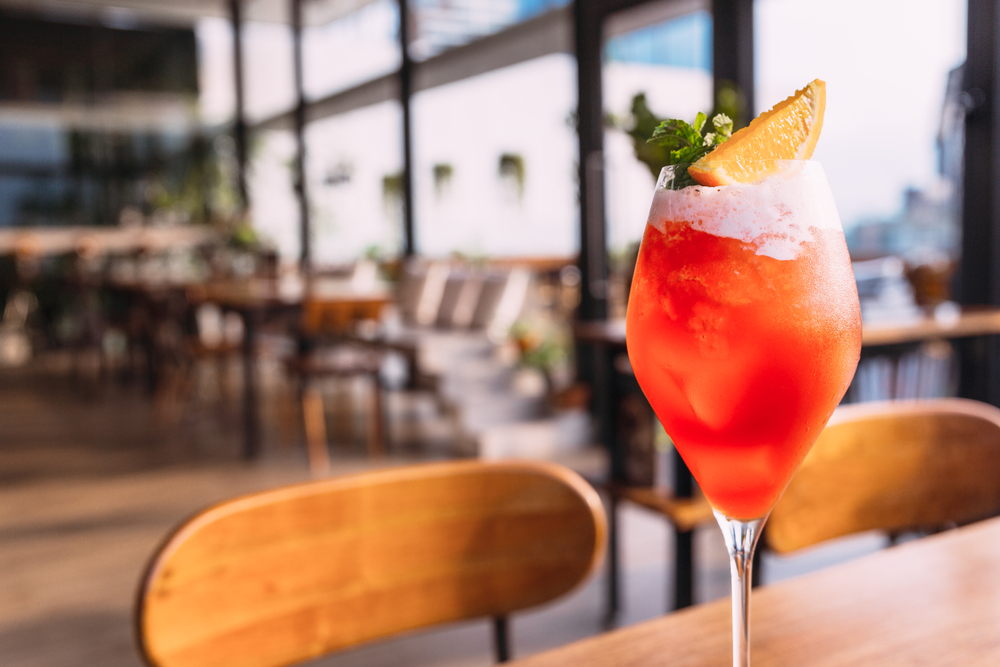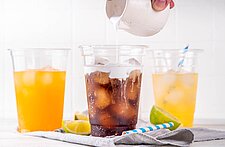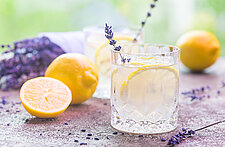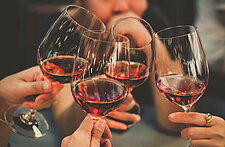At the start of COVID lockdown, alcohol sales went through the roof as people stocked up and got ready for lots of time at home away from their favorite bars. As the months went on, however, alcohol consumption dropped worldwide as the appeal of drinking at home, weight gain, and health concerns began to set in for many people. As 2021 begins, consumers are making resolutions to do things like lose weight, drink less, and boost their immunity while also trying to piece together a “new normal” that for many, no longer includes consuming as much alcohol, if any. The trend of non-alcoholic bar drinks being included on menus and in stores was increasing before COVID, and now it is back on track to become a major market as we head towards a post-pandemic world of beverage category experimentation.
Stay ahead of flavor trends and creative concepts—subscribe to In-sight!
Soft Drinks Seen as the “Better-For-You” Drink
With alcohol consumption down, non-alcoholic beverages, like soft drinks, are benefitting; popular spikes sparkling-water drinks and alcoholic lemonade/teas, have also see the rise in sales of their base, non-alcoholic versions as people look for something else to satisfy their desire for a bubbly, sweet drink. They are seen as a more permissible indulgence as a guilty-free way to relax at home as they reduce their alcohol consumption. Despite the sugar content, they are still seen as a “healthier” alternative to alcohol as calorie-counting becomes more of a concern with consumers looking to shed their “pandemic weight.” Some soft drink brands have begun adding more fruit, citrus, botanical, and herbal flavors to follow the trend of canned alcoholic cocktails. And to that end, as these flavors evolve towards mimicking cocktails, soft drinks are also seeing a spike thanks to the emergence of another COVID trend: mocktails.
Creative Mocktails for Going Dry Deliciously
The pandemic has pushed many people to get creative in the kitchen, whether it was with sourdough bread or trying to recreate the cocktails they missed from their favorite bartenders. As the months have gone on, the focus has switched from alcohol and indulgence to getting back on track to make healthier decisions and resolutions in the new year.
Mocktails are a fun way for home bartenders to still experiment while cutting out extra calories and alcohol. They can follow the lead of restaurants who, before the pandemic, were beginning to experiment more with more advanced mocktails as opposed to offering just a juice and seltzer alternative. The top menu ingredients pairings in restaurants unsurprisingly mimic a typical cocktail: juice, lime, lemon, orange, and pineapple; however, the fastest-growing ingredients to mix in go outside the box with lemon grass, espresso, matcha, almond, elderflower and other botanicals, and jalapeno. This speaks to consumers excited to experiment with complex, interesting flavors that don’t need the support of alcohol to make it an enjoyable mocktail.
[RELATED] Margaritas in 2021: Menu Insights and Flavor Trends
Those interested in enhancing their non-alcoholic drink experiment at home have lots of growing support from the online community, including London award-winning bartender Salvatore Calabrese, who launched a video series of mocktail tutorials to learn during lockdown as well as Chicago’s Aviary who released a soft-drink-based recipe book dedicated to the art of mocktails. Cocktail kits have been a growing trend during COVID, and now, there are also services dedicated to offering upscale, exciting mocktail supplies like bitters assortments, infusion jars, beverage kits, sugar cubes, syrups, and more, to help build a beautiful mocktail station at home.
Alcohol-Free Spirits
While modern mocktails are steps ahead of the Shirley Temples of the past, they often are still missing what makes a mocktail feel like a cocktail the most, and that’s, obviously, alcohol. The same argument has been made with vegetarian/vegan foods trying to capture the same dish sans meat and going from black bean veggie “burgers” to a whole revolution in meat alternatives that give the taste, feel, and smell of meat in a plant-based way. In response to wanting a more authentic experience, more convincing non-alcohol versions of just about any hard liquor are being sold that boil down the essence of drinking alcohol without the booze. For gin, the flavors lean heavily into juniper and spiced flavors to give it that sharp, piney taste and smell, while whiskey alternative has notes of oak and caramel and rum tastes woody and very molasses-forward. It’s more about mimicking the experience than the taste, and they achieve this with spices and extracts that recreate the familiar burn of an alcoholic drink.
Stocking The Bar Without Alcohol
Not everyone is interested in being an at-home bartender, however. While COVID has put a wrench into a growing trend of mocktails appearing more prominently on restaurants, most prevalently in fine dining and upscale restaurants, many quick-service and casual dining restaurants offering takeout do continue to list and expand their mocktail menus, oftentimes offering the same ore elaborate house cocktails in both alcoholic and alcohol-free alternatives. There is also the growing demand to find non-alcoholic beer, wine, and spirits on shelves, leading to developments in more sophisticated flavors and styles with more thought put into them than the flat bottled lagers with alcohol removed of the past. Now, like hard liquor, non-alcohol versions of IPAs, stouts, ales, and more can be found from reputable brewers filling a need in a satisfying and delicious way. And because of the 0% rating, general stores are able to stock up and coffee shops, like Getaway in Brooklyn, NY, can pour a glass of alcohol-free wine alongside a latte, essentially creating a new genre of alcohol-free bars but with the same social atmosphere as going out for a pint.
Thirsty for more? Join In-sight to receive our Weekly Newsletter, CLICK HERE!






